| Columns Retired Columns & Blogs |
Wonder if that's fixable with a resistive port plug?
Cheers George
I used DRA Labs' MLSSA system and a calibrated DPA 4006 microphone to measure the Aerial 5T's frequency response in the farfield, and an Earthworks QTC-40 for the nearfield and in-room responses. The 5T's voltage sensitivity is specified as 87dB/2.83V/m; my estimate was somewhat lower, at 85.2dB(B). The Aerial's nominal impedance is specified as 4 ohms, with a minimum magnitude of 3 ohms. My measurement was significantly different, with a magnitude (fig.1, solid trace) that dipped below 6 ohms in just two regions—between 29 and 54Hz and between 110 and 310Hz—and a minimum value of 4.28 ohms at 160Hz. The electrical phase angle (fig.1, dotted trace) is occasionally extreme, and the combination of 6 ohms and –38° at 108 ohms means a good 4 ohm–rated amplifier would be the best match for this speaker. The impedance traces are also unusual in that they seem atypical of a two-way design, which usually has a single impedance peak in the low treble due to the crossover filters. The 5T's magnitude trace has a second peak, centered on 5kHz, that suggests the presence of some sort of equalization network.
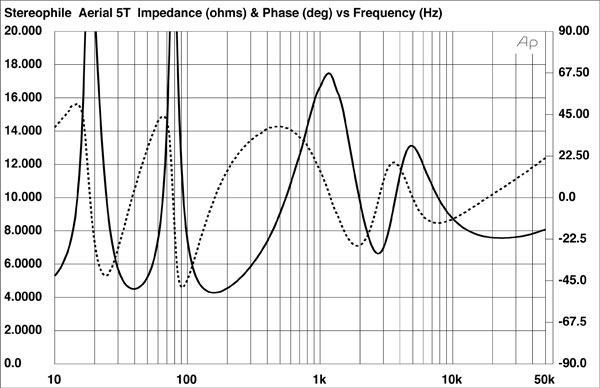
The impedance traces are free from the discontinuities that would imply the presence of cabinet-panel resonances, and the 5T's graceful-looking enclosure was indeed inert. The only resonant modes I could find, present on the top panel and both sidewalls, lay at 594Hz (fig.2), but these were very low in level.
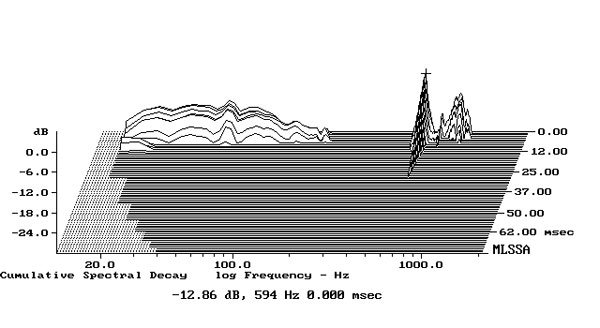
The saddle centered just below 40Hz in the impedance-magnitude trace suggests that the tuning frequency of the slot port on the front baffle lies in this region. A nearfield measurement of the woofer's output (fig.3, blue trace) reveals a minimum-motion notch at 38Hz. This is the frequency at which the woofer cone is held stationary by the back pressure from the port resonance, and the port's output (fig.3, red trace) does peak broadly between 20 and 100Hz. However, a strong peak between 700 and 800Hz in the port's response coincides with a small suckout in the woofer's farfield output (blue trace above 350Hz). The woofer crosses over to the tweeter (green trace) close to the specified 2.7kHz with steep filter slopes.
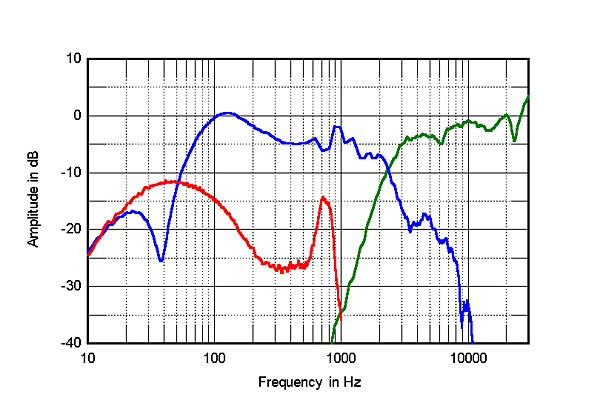
The tweeter appears to be set 2–3dB too high in level, but when the 5T's farfield response is averaged across a 30° horizontal window (fig.4) the speaker's treble response is superbly flat. However, there is a complicated pattern of small peaks and suckouts between 500Hz and 1.5kHz, perhaps related to the port resonance noted above. The rise in the upper bass is due to the nearfield measurement technique, which assumes a 2pi acoustic environment. The Aerial 5T's ported woofer alignment is tuned for articulation rather than boom.
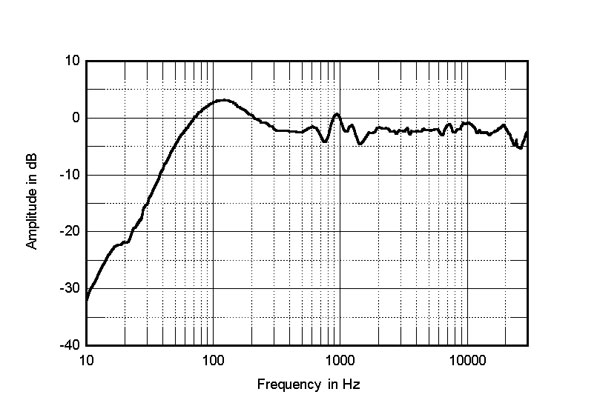
The plot of the Aerial's lateral dispersion (fig.5) reveals that its output above 7kHz does drop off rapidly to the speaker's sides. The contour lines in this graph are smooth, though the slight excess of energy to the speaker's sides in the low treble might make the 5T sound slightly bright in live rooms. In the vertical plane (fig.6), a suckout develops in the crossover region more than 5° above the tweeter axis, which suggests that the Aerial be used on high rather than low stands.
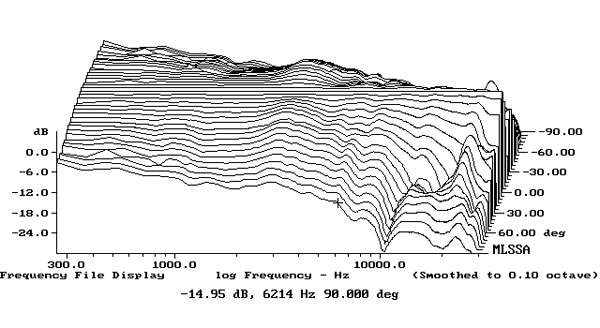
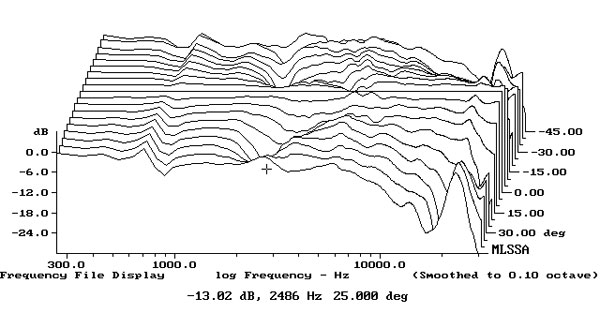
The 5T's spatially averaged in-room response (fig.7, red trace, taken with the speakers in the initial positions in the room) shows a generally smooth balance, though there is a slight excess of energy in region where the lateral-dispersion plot showed a slight off-axis flare. Compared with the BBC LS3/5a (blue trace), the Aerial lacks the small peak between 1 and 2kHz, which adds a touch of nasality to the LS3/5a's sound, but the American speaker's limited top-octave dispersion results in less high-treble energy in-room. At the other end of the spectrum, the Aerial has more upper bass, but its ported alignment results in a faster rolloff in the midbass and below. In both respects, the 5T resembles the KEF LS50 (green trace).
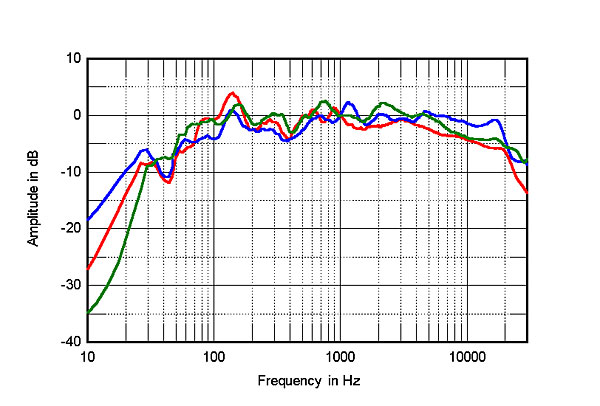
Compared with the Bowers & Wilkins 805 D3, which I also review in this issue (fig.8, blue trace), the Aerial 5T (red) has a similar in-room response to the British speaker in the midrange and upper bass, but more energy in the midbass and below. It lacks the B&W's depressed presence region, but the mid- and upper-treble regions are significantly lower in level. The two speakers did indeed sound as you would expect from this graph. With my room's increasing absorptivity in the treble, while the Aerial's balance was not as "brilliant" as the B&W's, the 5T's was closer to being truly neutral.
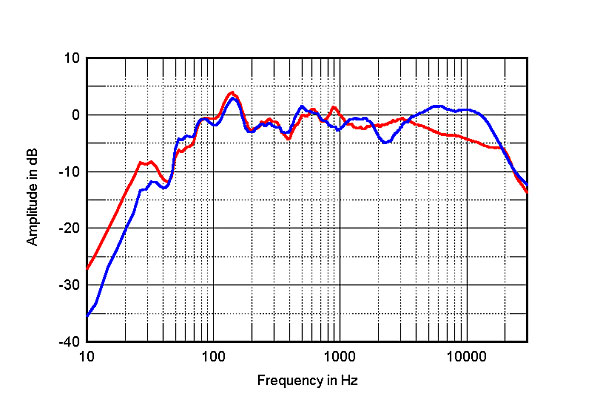
In the time domain, the Aerial's step response on the tweeter axis (fig.9) reveals that both of its drive-units are connected in positive acoustic polarity, but the tweeter's step blends smoothly with the woofer's. The 5T's cumulative spectral-decay plot (fig.10) features superbly clean decay throughout the treble, but some delayed energy at the frequencies of the small peaks in the upper midrange in the quasi-anechoic farfield response.
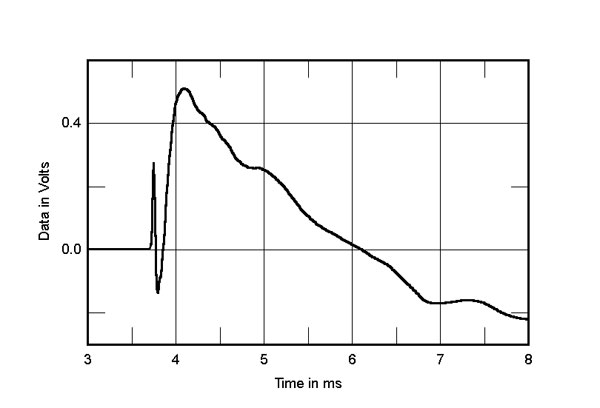
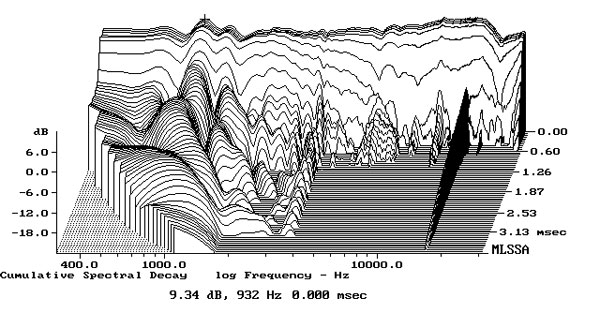
Other than its port's peaky midrange output, Aerial's 5T demonstrates excellent speaker engineering.—John Atkinson

Wonder if that's fixable with a resistive port plug?
Cheers George

Excellent review -JA.
Happy Listening!

As a European I know I should tread carefully here, but is this a roundabout way of saying that all parts are actually manufactured in China? If so, why not just get over it and enjoy the 5T for what it is, judging by your review: a magnificent loudspeaker.
Cheers, Johan

I've owned these ever since this review came out. These are poorly balanced, nasal-sounding speakers with inadequate bass. If you read between the lines of the review and look at the measurements, you'll get the picture. They sure do look nice. But the Monitor Audio Silver 100 7Gs, which I bought several years later, are 1/3 the price, have just as much detail and tone, and a more balanced and full-bodied sound. Just get those. These were a big disappointment and waste of money.

At this price point I wasn't expecting JA to find speakers from this brand with off-axis windows this narrow, even if that B & W 803 D3 is $2K/pair more. What was Aerial thinking? Why opt for a ported box and/or other design choices just to get extended bass and/or more SPLs-THAT's what subwoofers are for! And I need two pairs of mains and a CC speaker for this long overdue 5.1 system build. So the hunt continues. Very frustrating.